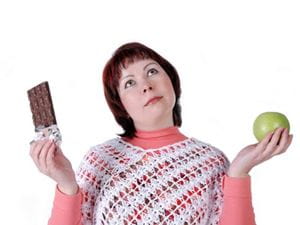
Hidden Dyes in 10 Foods You Would Never Expect
When it comes to food and other household products, we like them to look the way we think they ought to look. For some reason, we all think the mouthwash ought to look bright blue and that stomach medicine ought to be brilliant pink. We want baked goods that look golden brown and lemon juice that is bright yellow. And what kid doesn’t love to see multicolored snacks and vibrantly colored beverages?
Food has been colored since ancient times. There are many natural ingredients that can be used to change or enhance the color of food. Beet juice, for example, can dye foods pink and turmeric works for yellow. In recent years, the food industry has taken this to a whole new level.
Moreover, the way food colorings are described confuses us even more. In the United States, if a food says it contains “artificial colors” or notes “artificial color added,” it means that natural food dyes have been used. Yes, in the world of food additives, “artificial dye” means “natural dye.” When dyes are synthetic (made in a laboratory), they are sometimes called “certified colors” and often appear on labels as a color and number, such as Red 40 or Green 3.
Synthetic dyes have been around for years, but Americans today consume five times as much synthetic dye material as they did in the 1950s—and dyes go far beyond the food chain. Synthetic food dyes have been linked to serious health concerns. Some of the most frequently used synthetic dyes (Yellow 5, Yellow 6, Red 40) have been associatedwith cancer. Children seem to be particularly vulnerable to synthetic dyes (possibly because they are smaller) and pediatric use of synthetic dyes has been tied to hyperactivity, allergies, learning disorders, mood disorders, and behavioral issues. The evidence for the dye-associated risks is so compelling that the European Parliament took steps in 2010 to help phase out their use. In the U.S., the FDA is still considering how to handle synthetic food dyes, possibly requiring warning labels.
Meanwhile, they’re out there. Most of the time, they appear on labels with the color and number designation. However, sometimes they lurk behind innocent-sounding names, like “caramel coloring,” which is sugar processed with ammonia or sulfites or both.
Everybody ought to know that neon-colored candies, colored baked goods and gaudy cereals are dyed. But there are synthetic dyes in food that we may never expect.
1. Cereal bars, which look like baked crust surrounding a fruit filling—may contain synthetic red, yellow, and blue colors.
2. Yellow cake mixes would make for a pasty-white cake if it didn’t have some yellow synthetic dyes. (In the olden days when people baked from scratch, yellow cake took its name and color from the egg yolks in it—today’s powdered eggs do not have the same effect.)
3. Many prepackaged food kits, such as Hamburger Helper—contain food dyes, particularly red dyes to help make the tomato sauce look like it might have some tomatoes in it.
4. Cereals, even the plain-colored varieties, often contain dyes.
5. Many beverages, from soda to sports drinks and even those “juice” drinks that are really flavored sugar water—can contain dyes. And don’t think the beverage has to be neon. Ginger ale contains dye.
6. Ice creams often contain dyes, particularly for flavors like strawberry.
7. Chocolate syrup may contain dye, just to make sure the chocolate looks rich enough.
8. Gelatin is practically just a vehicle to serve up synthetic dyes and sugar.
9. Many oranges from the tree are colored with Red 2, to give them a beautiful deep orange color.
10. Products with lemon flavor are often dyed yellow, since lemons by nature produce a very pale juice—the outside skin is yellow but not the juice. Nevertheless, we like our lemon-flavored products to look deep yellow!
But dyes are all around us. Check the list of ingredients on these types of categories—you’ll often find synthetic food dyes.
· Over-the-counter and prescription medicines (antihistamines, antacids, topical products)
· Sunscreen, aloe vera gel, and self-tanning products
· Mouthwash
· Toothpaste
· Body care products, from soap to gels to lotions to shampoos
· Cosmetics
· Pet foods
What can you do? Read the ingredients carefully. Today, many products also offer detailed information online. Do not assume that just because your product is not bright neon pink that it does not contain synthetic dyes!

